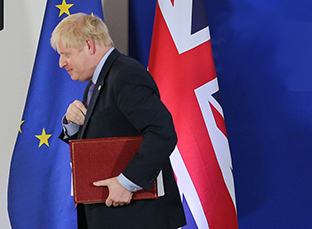Brexit - the formal start but not the practical end just yet
- News Feed
- Friday, 07 February 2020
Well, it finally happened. 1,317 days, two elections and a number of pieces of legislation after the UK voted to leave the European Union (EU), the departure procedures commenced, writes Andrew Hudson.
On 31 January 2020, Britain formally resigned its position within the EU. However, reports of the spilt as a ‘divorce’ probably overstated the position given that there were few immediate consequences. It’s more of a ‘conscious uncoupling’ (to quote Gwyneth Paltrow), with many of the details yet to be finalised and the parties largely continuing to live together until the details can be worked out. The next real deadline is the end of the year, at which time the UK and EU will have negotiated a formal exit arrangement, agreed to an extension of time or, if not, will have moved to a version of a ‘no deal’ Brexit in which United Nations World Trade Organisation (WTO) default trading arrangements between countries’ will apply. There is some confidence that a Free Trade Agreement (FTA) and other agreements governing the relationship can be secured by 31 December 2020, but their form and content could be one of several versions.
The current state of the arrangements applying to trade between the two is as follows:
• The EU (Withdrawal) Act has come into force in the UK commencing a transition period until 31 December 2020.
• The EU has passed a resolution accepting the withdrawal. UK, members of the EU Parliament have withdrawn.
• The UK became a separate WTO member from 1 February 2020 and no longer has to ‘sit at the back’ of the room as an observer without a right of separate representation.
• The UK has now ‘opened for business’ a number of separate trade representative offices around the world extolling the virtues of business with the UK outside the EU.
 • The EU and the UK will negotiate a new economic and security relationship, (including a new agreement on trade, whether some form of FTA or otherwise) based on the concepts contained in the ‘Polit ical Declaration on the EU-UK future relationship’.
• The EU and the UK will negotiate a new economic and security relationship, (including a new agreement on trade, whether some form of FTA or otherwise) based on the concepts contained in the ‘Polit ical Declaration on the EU-UK future relationship’.
• The UK can’t start FTA negotiations with other countries until the EU transition is at an end.
• Those countries with an FTA with the EU now can treat the UK separately but aren’t expected to do so. For example, Singapore has already confirmed that it will continue to treat the UK as part of the EU as part of its FTA with the EU.
• The EU-UK transition will last until 31 December 2020. Under the Withdrawal Agreement, it can be extended for up to two years if the EU and the UK agree to do so. However, at present, the UK Government’s stated intention is not to seek or agree to an extension, even though it is written into UK law as an option.
A ‘no deal’ outcome on trade remains a possibility if the EU and the UK fail to conclude a new trade agreement before 31 December 2020 and the transition period is not extended. In that case, with effect from 1 January 2021, the basis for EU-UK trade would automatically default to WTO terms. There are a number of other consequences in other areas. For example, UK citizens are no longer formally EU citizens but will be treated as such for the time being.
The UK has indicated that a priority from January 1 2021 will be to secure FTAs with major trading partners such as the EU, the US and Canada, together with its ‘traditional friends’ such as NZ and Australia. The UK prime minister Boris Johnson (pictured) has stated that the UK would prefer to have a ‘comprehensive’ and ‘frictionless’ FTA with the EU like the EU’s deal with Canada (which took years to negotiate). In lieu of such a deal, he has stated that he would even settle for a ‘bare bones’ FTA with the EU focused only on reducing tariff levels and Customs issues ‘such as Australia has with the EU’.
That is an odd position for two reasons. Firstly, Australia does not have an FTA with the EU. Secondly, describing our FTAs as ‘bare bones’ is somewhat misconceived. We describe our FTAs as ‘comprehensive’ and certainly the best deals which could be done at the time. Any ‘frictionless’ FTA between the EU and the UK also could be difficult to achieve as the EU has already set some negotiating ‘red lines’ that are unacceptable to the UK because they require relinquishing ‘sovereignty’ on some issues - and the UK left the EU to recover just that sort of sovereignty.
Beneath all the rhetoric there seems to be a real likelihood that there will be a ‘harder’ trade border between the EU and the UK than has been in place for 48 years.
For Australian exporters and importers, much will depend upon any FTAs we can reach with the UK and the EU. There are already some small agreements in place but any growth in trade would require substantial cuts to tariffs, quotas and barriers for our farmers, investors and winemakers. Whatever happens, the benefits may not be as significant as have been predicted as, after all, the ‘tyranny of distance’ has always been the major impediment to  Australia’s trade with the EU and UK. Our exporters will also need to be careful of new regulations and procedures to be introduced at the UK border along with new standards and exposure to the UK’s new ‘dumping regime’.
Australia’s trade with the EU and UK. Our exporters will also need to be careful of new regulations and procedures to be introduced at the UK border along with new standards and exposure to the UK’s new ‘dumping regime’.
Stay tuned for more updates as the smoke (and virus) clear.










